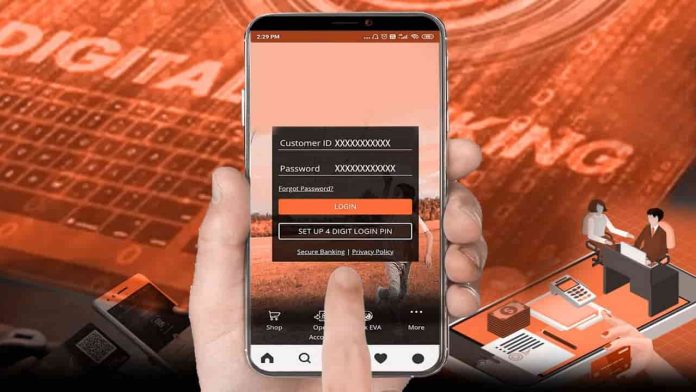By Shivanand Pandit
In an attempt to expand financial inclusion, Prime Minister Narendra Modi inaugurated 75 Digital Banking Units (DBUs) in 75 districts on October 16. The DBUs are being set up to guarantee the gains of digital banking in every nook and corner of India.
According to the Prime Minister’s Office (PMO), DBUs will be brick-and-mortar outlets and offer a wide range of digital banking services. They will check balances, open savings accounts, print bank passbooks, transfer funds, invest money in fixed deposits, move loan applications, credit and debit cards, pay tax and bills and register nominations. The PMO also stated that DBUs will empower customers to have cost-effective, expedient access and a greater digital experience of banking products and services throughout the year.
Modi said digital banking had helped to attain transparency in the working of the banking system. He insisted that banks fix goals to bring as many people as possible into digital banking and urged every bank branch to bring at least 100 businessmen within the fold of 100% digital banking.
RBI Governor Shaktikanta Das said that digital banking was an ideal avenue for providing banking services throughout the country. He said that the formation of DBUs would enlarge the digital infrastructure in India and ease customer experience through smooth banking transactions. He also said that banks are free to involve business correspondents to inflate the footmark of DBUs and these physical units would act as pivotal points for developing customer knowledge and education about using digital services.
Finance Minister Nirmala Sitharaman said these DBUs would prepare people who do not have a personal computer, laptop, or smartphone to use banking facilities in a paperless mode. The operations in DBUs would be available 24×7. She said this would assist the economy in becoming cashless and comprehensive.
DBUs are specialised business units for providing digital banking products and facilities. These will be provided in both self-service and supported styles. It has a self-service zone for customer transactions using interactive ATMs, cash deposit machines, interactive digital walls, net banking kiosks, video call facilities and tab banking. The assisted zone in a DBU is manned by a few bank staff.
DBUs would be for digital banking what PCOs (in the late nineties) were for long-distance calling or internet cafes for browsing. From being physical to phygital to digital-first to digital only—this has been the long journey of banking in India. In fact, NITI Aayog has pitched for “digital only” banks to be set up in.
Each DBU must provide some minimum digital banking products and self-service execution facilities. However, banks have the liberty to provide any other product or facility too. Any product that can be delivered digitally by way of internet banking or mobile banking can be delivered in the DBU.
DBUs can be established by all national scheduled commercial banks, excluding regional rural banks, payments banks and local area banks. Presently, 11 public sector banks, 12 private sector banks and one small finance bank participated in the programme. Currently, all 29 states and eight Union Territories has got at least one DBU. Karnataka, Odisha, Rajasthan, Tamil Nadu and Uttar Pradesh have got four each. Will it change the landscape of banking?
Although digital banking has numerous advantages such as flexibility, time-saving, environment-friendly, lower overheads, banking benefits, online bill payments, etc., it also has a few challenges. Technology challenges, IT practices, certain cultural issues, security issues, industry lethargy and workplace constraints have affected the widespread acceptance of digital banking.
Many people shrink from digital banking due to security reasons and many instances of cybercrimes are reported daily. They feel anxious about online scams. Moreover, navigating through the website of a bank may be difficult for first-time users. Opening an account could also take time as some sites ask personal details, including photo identification, which can inconvenience the potential customer.
Most customers like the personalised service provided by staff in bank branches. Many Indians are also reluctant to contact call centres and bank customer contact lines to tackle problems related to the online bank account. Besides, India has one of the lowest broadband connectivity penetration rates in Asia compared to Japan, Taiwan, Korea and Singapore. Many in smaller cities and towns still use a dial-up connection. Slow connectivity speed discourages users from digital banking.
For banks, it is a huge advantage as they can operate from anywhere in the world. But it is difficult for regulatory authorities to enforce finance laws. Additionally, every nation has different regulations. Therefore, it is difficult to impose the same rules and regulations in every country. Customers using digital banking services might become irritated by needless emails and updates.
DBUs will take banking services beyond metros to regions where financial inclusion, access to capital and formalisation of credit remain a challenge. Due to the adoption of digitisation, the banking sector in India is undergoing remarkable changes as well as obstacles. Smartphones can be easily used to access many digital banking services. The banking sector has also become more competitive with the arrival of digitisation and guaranteeing better customer service.
For DBUs to find acceptance and win the confidence of customers, banks must promise that the local ability is coached and permitted to man these outlets. Recurrent transfers of staff at these outlets must be avoided. Secondly, while internet penetration has amplified, the quality of the internet continues to be a problem in Tier-2 and Tier-3 regions.
In addition, the government and banks, including the RBI, should solve all obstacles inherent in the digital banking system. For now, the new kid on the digital lending block will be keenly watched for its performance and adherence to compliance norms and data privacy among others.
—The writer is a financial and tax specialist, author and public speaker based in Margao, Goa


